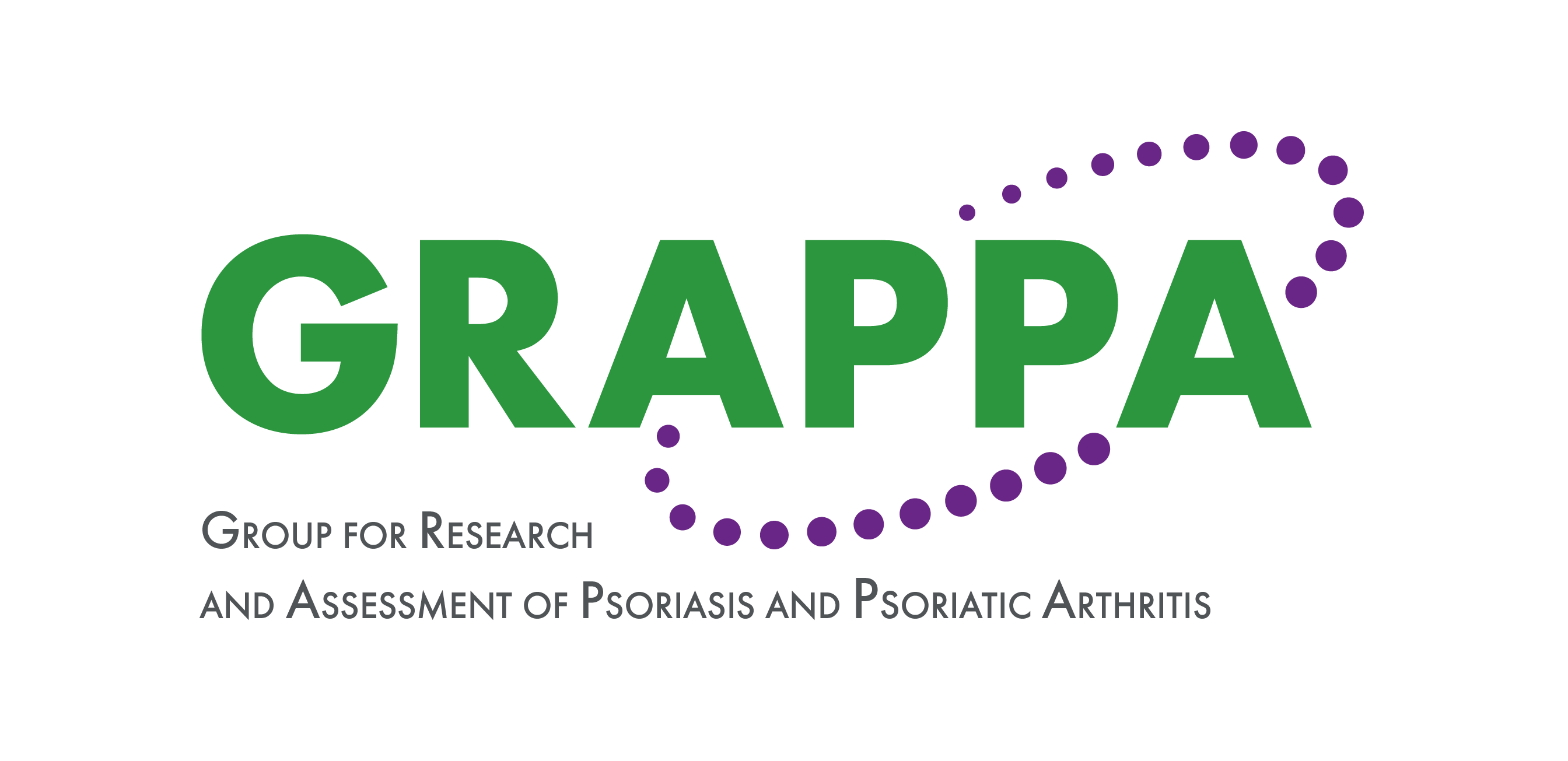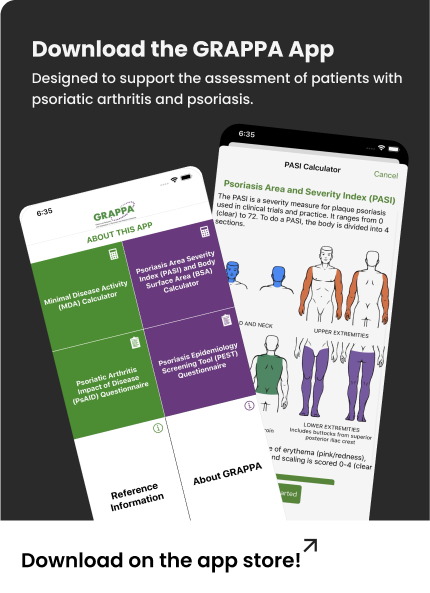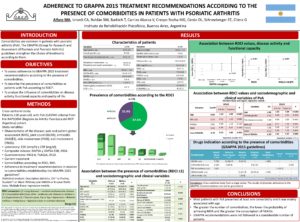Adherence to GRAPPA 2015 Treatment Recommendations According to the Presence of Comorbidities in Patients with Psoriatic Arthritis
Authors
Comorbidities are common in patients with psoriatic arthritis (PsA). The GRAPPA (Group for Research and Assessment of Psoriasis and Psoriatic Arthritis) guidelines strengthen the choice of treatments according to them.
The objectives of this study are to assess adherence to GRAPPA (Group for Research and Assessment of Psoriasis and Psoriatic Arthritis) 2015 treatment recommendations according to the presence of comorbidities, to describe the prevalence of comorbidities in patients with Psoriatic Arthritis (PsA) and to analyze the influence of them on disease activity, functional capacity and quality life.
This is a cross-sectional study. Adult patients with PsA (CASPAR criteria) from the RAPSODIA cohort were included. Sociodemographic and clinical characteristics, disease activity and current treatment were recorded. Comorbidities were assessed by the RDCI index (Rheumatic Disease Comorbidity Index) which considers: pulmonary, cerebral- and cardiovascular, gastrointestinal diseases, fractures, depression, diabetes and cancer (total value: 0-9). Adherence to treatment recommendations in relation to the reported comorbidities was analyzed according to the 2015 GRAPPA guidelines.
Statistical analysis: Descriptive statistics. Chi2 or Fischer, Student T or Mann Whitney and ANOVA or Kruskal Wallis tests. Multiple linear regression models.
Regarding results total of 170 patients were included, 50% female with a median (m) age of 56 years (IQR 45-65) and disease duration of m 9.9 years (IQR 4-17). Patients with RDCI≥1 were reported by 67.6%. Were older (X 57±13 years vs X 48±13 years, p<0.0001), had a higher frequency of overweight or obesity (84.3% vs 67.3%, p=0.011) and a poorer quality of life (PsAQoL X 7.6±6.6 vs X 5.2±6, p=0.025). Higher RDCI scores were observed in patients with pure peripheral involvement (X 1.6 ±1.6 vs X 0.9 ±1.1, p=0.01), in those not achieving MDA (X 1.7 ±1 vs X 0.9 ±1, p=0.001), in those using NSAIDs (X 1.8 ±1.7 vs X 1.1 ±1.8, p=0.005) and with functional disability. In the multivariate analysis, the presence of comorbidities (RDCI≥1) was associated with older age (OR 1.06, 95%CI 1.03-1.09). Contrary to GRAPPA recommendations, 70% of patients with heart disease were using NSAIDs and 20% glucocorticoids. Moreover, about half of those with hepatic or kidney disease were taking NSAIDs or methotrexate and 28% of those with diabetes were receiving glucocorticoids.
In conclusion, most patients with PsA presented at least one comorbidity and it was mainly associated with age. GRAPPA recommendations were not followed in a considerable number of patients.


